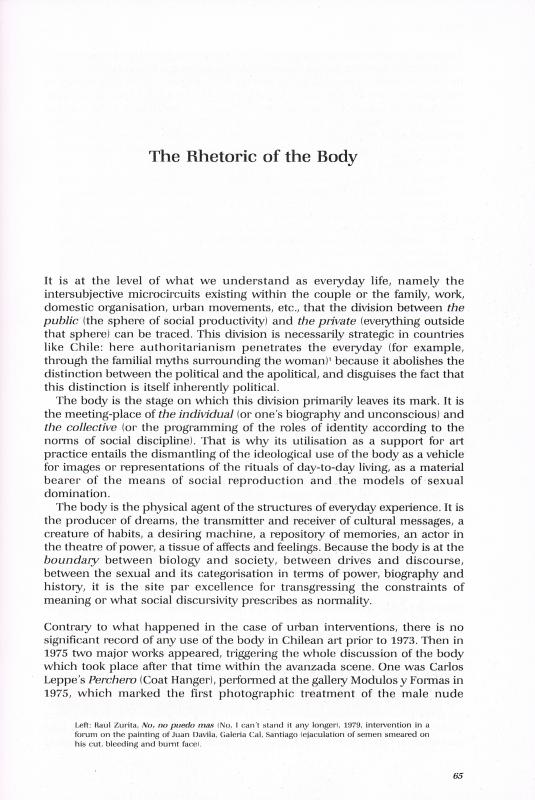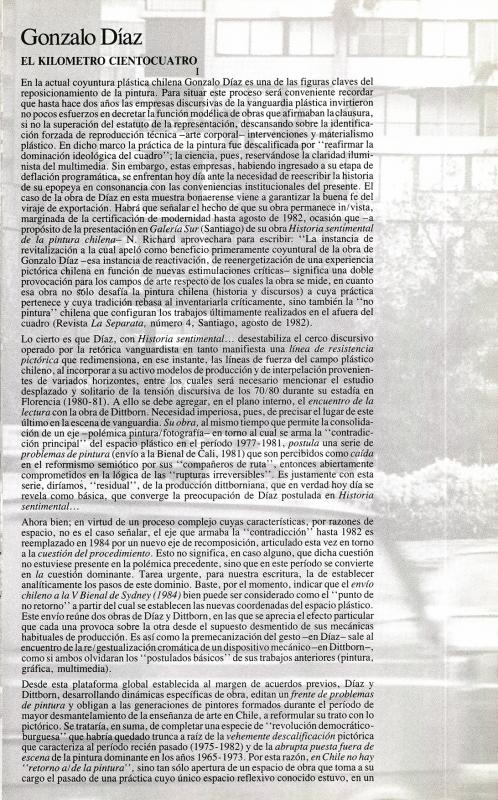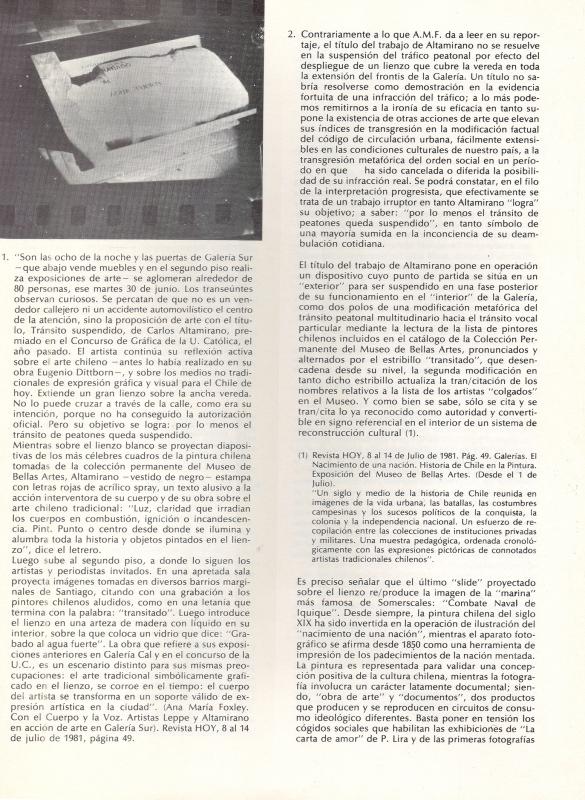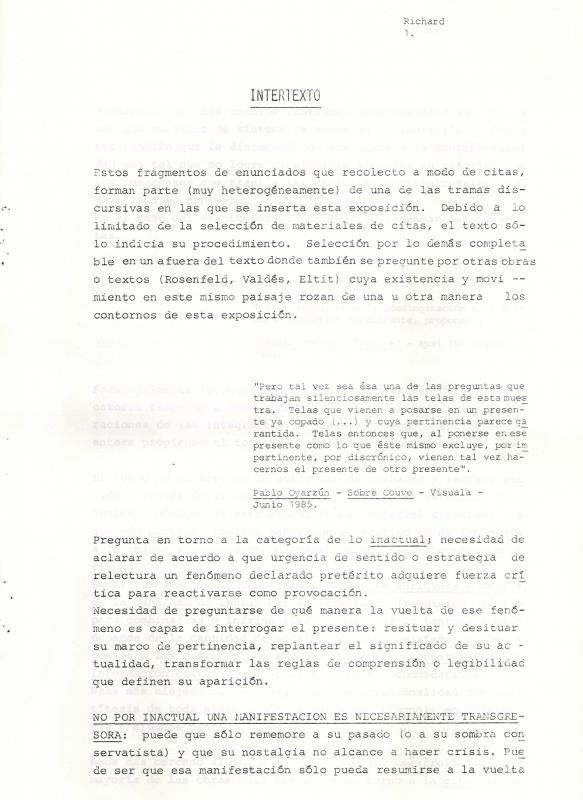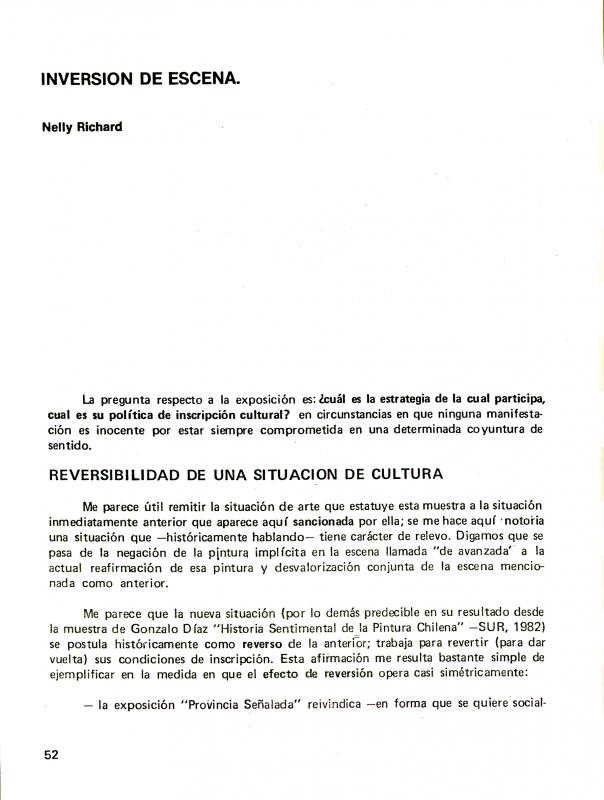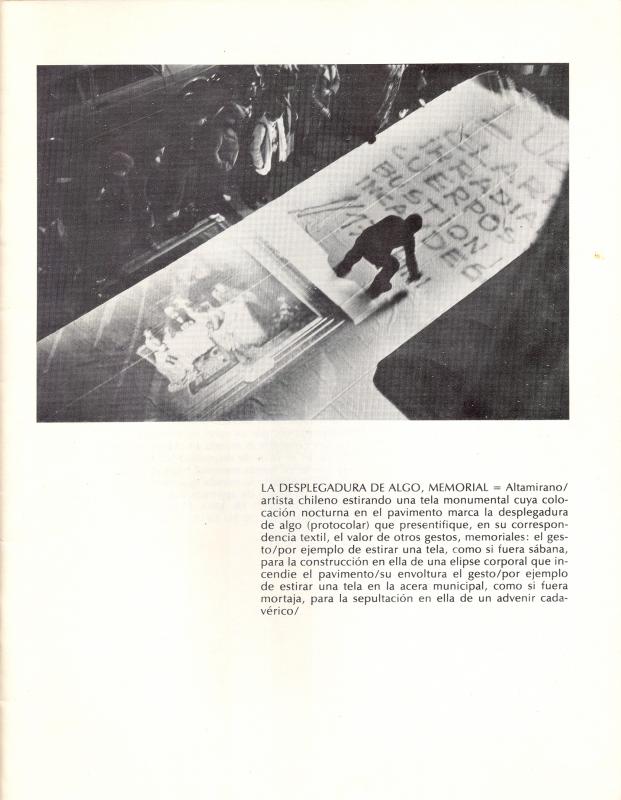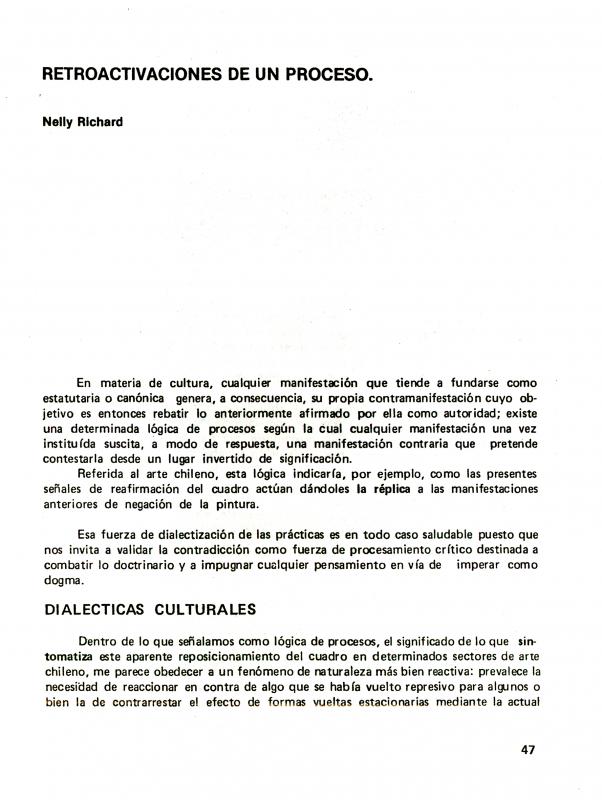"Return to the Pleasurable” is a chapter in Margins and Institutions: Art in Chile Since 1973, the book by the cultural critic Nelly Richard (b. 1948), published in Australia (1986), which was essential in consolidating her reading of the group of artists she referred to as the Escena de Avanzada. The year after it was published, the book was the subject of a seminar held in Chile that sought to review art production in a series of chapters: “Ellipsis and Metaphor;” “The Photographic Condition;” “The Scene of Writing;” “The Dimension of Social Exteriority in the Production of Art;” “Rhetoric of the Body” [See the following in the ICAA Digital Archive (doc. no. 744815)]; “The Displacement of Supports and the Eradication of the Boundaries between Genres;” “The Problematic of Latin American Art;” and “History and Memories,” in addition to the chapter mentioned here.
Escena de Avanzada was the name that Nelly Richard coined to refer to a number of neo-avant-garde artists and practices that challenged art, its forms of production, and its context in a country governed by a military dictatorship. The movement came to represent the progressive “scene” of an unofficial art that sought to foster both a critical awareness and a commitment to resistance. The main art practices of the time therefore focused on works that could challenge the dominant culture’s artistic discourse. Richard’s approach led to a debate that addressed art, politics, and society from a range of different perspectives.
In “Return to the Pleasurable” Richard moderates a debate between a group of artists, some of whom were members of the so-called Escena de Avanzada and some of whom were not. The discussion centers on the role of painting in the Chilean art world, on the grounds that—according to a widely held opinion at the time—the conceptual approach taken by progressive artists had relegated painting to a position of secondary importance. It should be noted, in this context, that the cultural journalist Claudia Donoso (b. 1955) claimed, in Apsi magazine a year before the publication of Margins and Institutions, that younger artists were no longer showing conceptual art at their exhibitions (beginning with Provincia Señalada, 1985). Though damaging to her point, Richard mentions that claim here. Her intent is to show painting’s potential when faced by younger artists’ attempts to define it as a subjective and passionate expression that is hopelessly detached from any political discussion in a country that is still under the thumb of a fascist dictatorship. [For more information about this debate, see: “Gonzalo Díaz: El Kilómetro cientocuatro” (doc. no. 734722), part of Tránsito suspendido (doc. no. 731739), by Justo Pastor Mellado; see also the following texts by Richard: “Intertexto” (doc. no. 734686), “Inversión de escena” (doc. no. 731376), another text about Tránsito suspendido (doc. no. 731751), and “Retroactivaciones de un proceso” (doc. no. 730159).]

